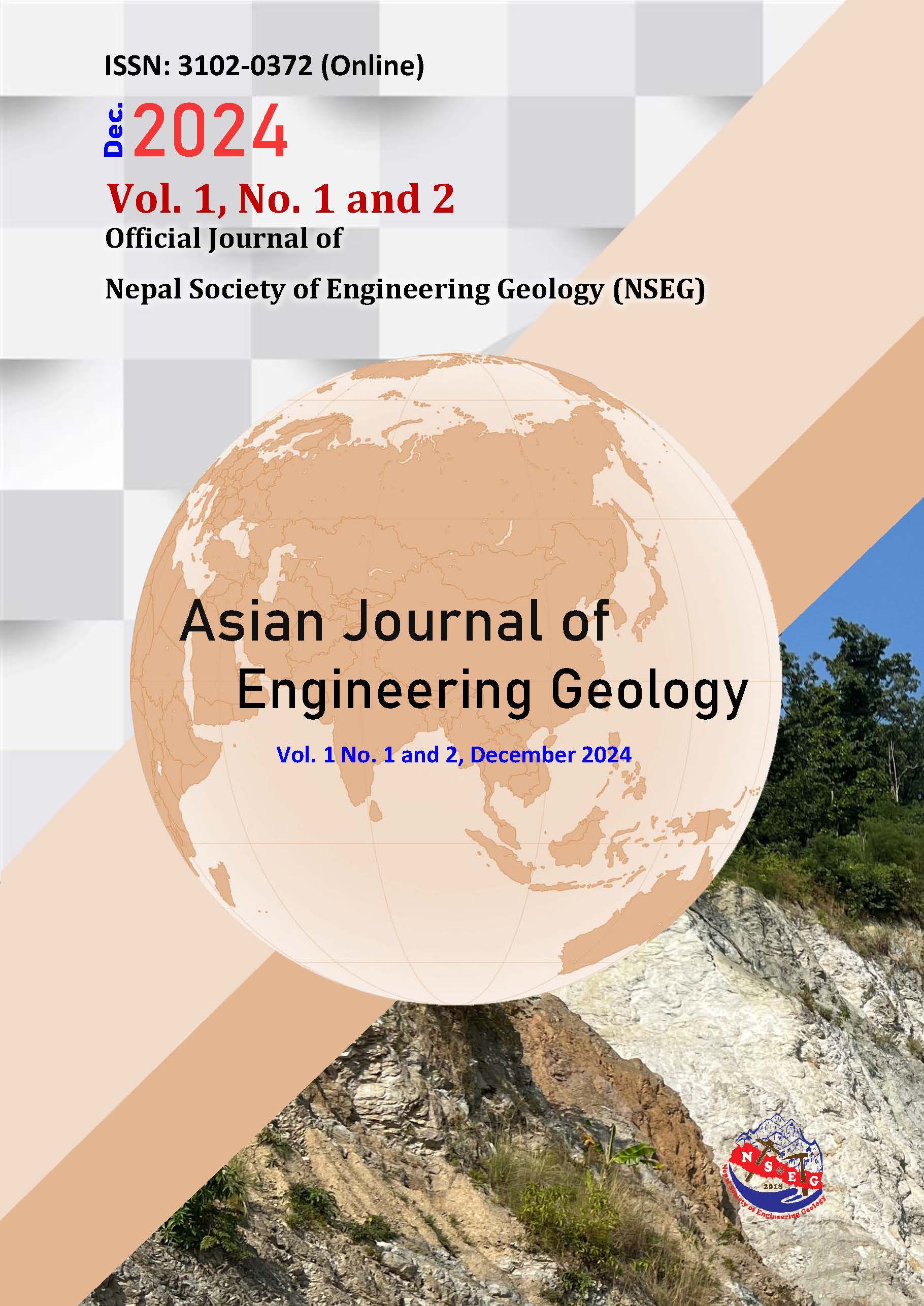Determination of Terrain-Specific Restitution Coefficients and Rockfall Hazard Assessment in Urbanized Mountainous Areas of Nepal
Keywords:
GeoRock 2D, Rockfall, Restitution coefficientAbstract
The primary aims of this study were to determine the restitution coefficient of the material and to simulate rockfall at the steep slope in Chaku Bazar. Initially, the normal and tangential restitution coefficients were calculated for 10 different rock boulders, varying in shape and composition using the Tracker Video analysis. The computed values for normal and tangential restitution coefficients were then used to simulate rockfall behavior using GeoRock 2D across four different sections, predicting rockfall trajectories and run-out distances. The normal restitution coefficient for vegetated rocky terrain was 0.34, while for solid rock it was 0.73. Likewise, the tangential restitution coefficient was 0.51 for grass-covered areas and 0.82 for rocky surfaces. After determining the restitution coefficients, the calculations revealed a maximum collision energy of 15000 kJ and a maximum bounce height of 30 meters at the bazar area.
References
Abebe B., Dramis F., Fubelli G., Umer M. and Asrat A. (2010). Landslides in the Ethiopian highlands and the rift margins. J. Afr. E. Sci. (56):131–138.
Bunce C. M., Cruden D., and Morgenstern N. (1997). Assessment of the hazard from rockfall on a highway. Can. Geotech. J. 34(3), 344–356.
Dorren L. K. (2003). A review of rockfall mechanics and modelling approaches. Prog. Phys. Geogr. (27), 69–87.
Evans S. G. and Hungr O. (1993). The assessment of rock fall hazard at the base of talus slopes. Can. Geotech. J. (30), 620–636.
McCarroll D. and Pawellek F. (1998). Stable carbon isotope ratios of latewood cellulose in Pinus sylvestris from northern Finland: variability and signal-strength. Holocene (8), 675–684.
Newton I. (1686). Philosophiae naturalis principia mathematica. G. Brookman (1).
Pfeiffer T. J. and Bowen T. D. (1989). Computer simulation of rockfalls. Bull. Assoc. Eng. Geol. 26(1), 35–146.
Sabatakakis N., Depountis N. and Vagenas N. (2015). Evaluation of rockfall restitution coefficients. Eng. Geol. for Soc. and Terri. - Vol 2: Landslide Processes. Springer International Publishing.
Varnes D. J. (1978). Slope movement types and processes. In Special Report 176: Landslides: Analysis and control (Eds: Schuster R.L and Krizek R.J), Transportation and Road research board, National Academy of Science, Washington D.C. 11-33.
Published
Issue
Section
License
Copyright (c) 2024 Nepal Society of Engineering Geology (NSEG)

This work is licensed under a Creative Commons Attribution 4.0 International License.




